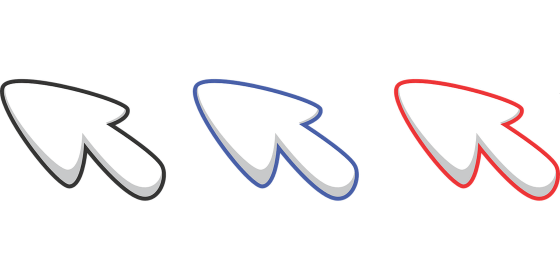Technique capable of discriminating irritation by mouse movement appears

When surfing the web, it is common for irritations to recruit for various reasons, such as taking time to load the site, bad site layout, not sure where the information you want is ... ... etc. Most people will leave such a page, but publishers have no way of knowing such 'reality'. However, a research report on how much the user is irritated from the user's "mouse cursor movement" is reported, so that the publisher can judge when and where the user feels stress The possibility is emerging.
Interring Negative Emotion from Mouse Cursor Movements.pdf
(PDF file)http://www.misq.org/skin/frontend/default/misq/pdf/Abstracts/11979_RN_HibbelnAbstract.pdf

U mad bro? Researchers measure emotion with your mouse clicks
http://news.byu.edu/archive15-dec-angrymouse.aspx
Websites may soon know if you're mad-a little mouse will tell them | Ars Technica
http://arstechnica.com/science/2015/12/websites-may-soon-know-if-youre-mad-a-little-mouse-will-tell-them/
When a person is irritated, it is somewhat imaginable from the action, such as striking a desk, sighing, shaking poorly, but features appear also in the movement of the mouse cursor.Brigham Young University (BYU)Professor Jeffrey Jenkins and his colleagues have discovered that a characteristic movement can be seen in the mouse cursor depending on the mood that the user feels stress, anger or disappointment during web surfing.
Professor Jenkins chose 65 users who use Amazon's crowdsourcing service randomly, intentionally creating a situation that is frustrating by requesting hard-to-do tasks and so on, so that the movement of the mouse cursor in an irritated state I investigated. The result is that contrary to the prediction before the experiment, irritated people say "the amount of movement of the mouse cursor increases and the movement speed of the mouse cursor decreases itself." Professor Jenkins, who had predicted that if you were frustrated he would move the mouse finely and violently, he was surprised by the results that were contrary to intuition.

Professor Jenkins also conducted similar experiments with 126 users on the e-commerce site, and succeeded in discriminating the user who suffered from the operation by stress from the movement of the mouse cursor with an accuracy of 82%. Furthermore, from the survey results asking about negative emotions that occurred during operation such as "frustrating" by 80 users, not only the negative emotion from the movement of the mouse cursor but also the type of movement It was able to be determined. For example, when a user is distraught or confused, it seems that the trajectory depicting a straight line or a large curve moves abruptly in a zigzag manner.
In web services, the basic flow of information is "from site to user", as long as the user does not take special actions such as clicks or command entry, the publisher feels how the user views the page From the research result of Professor Jenkins, from the movement of the mouse cursor it is possible to know when and where the user embraced the negative emotions where "from users There is a possibility that it can be utilized for site construction and improvement of service quality by the flow of new information to the site.

Professor Jenkins has obtained a patent on technology to investigate the user's negative emotions from the mouse cursor developed and has been licensing mainly BYU's local Utah startup and working on practical use Thing. Also, Professor Jenkins seems to be starting initial research on user's operation on mobile devices such as smartphones and tablets.
Related Posts:







